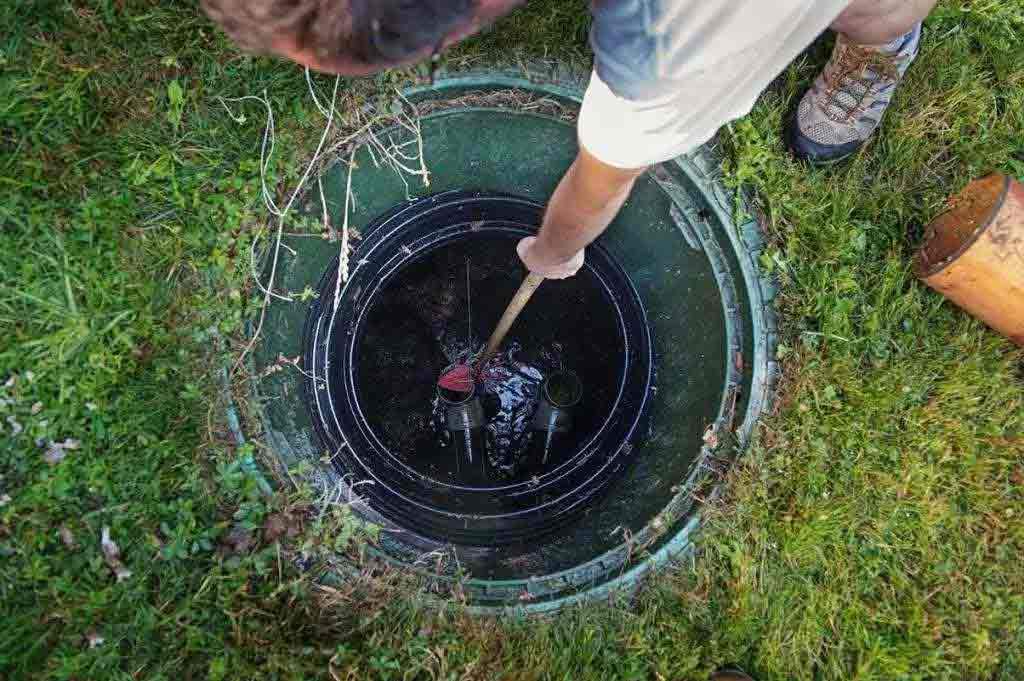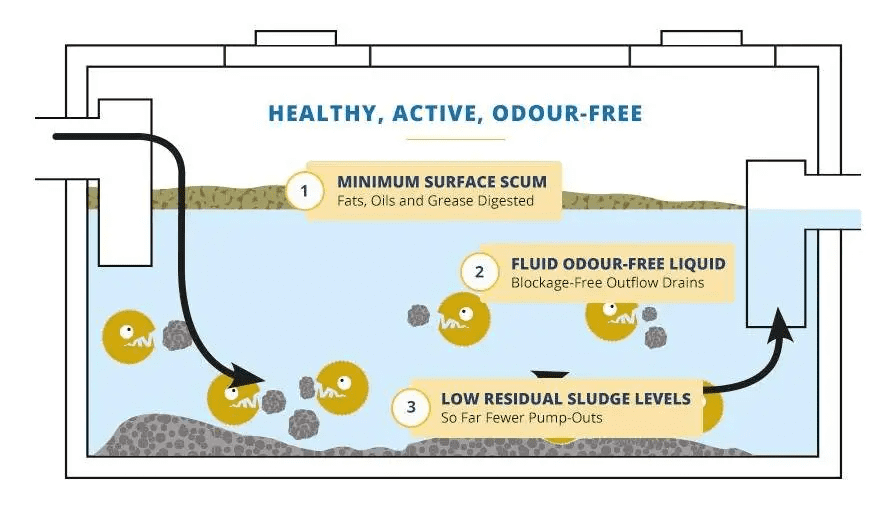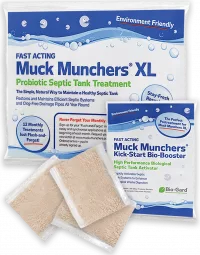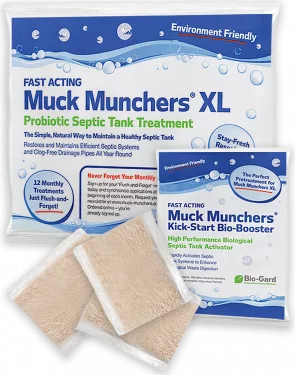What is Septic Sludge?
If you own a septic tank, you may have noticed that, over time, things may just start to get a bit unpleasant. The fact is, you’re dealing with natural waste, and that means you might encounter a few bad smells or grim sights if you go opening up the tank.

One of the biggest problems that lots of septic tank owners face is sludge.
Sludge is not just a composite of the natural waste you choose to flush away or get rid of! It comprises of lots of different things – none of it particularly nice – although it seems to be a favourite dinner party subject when a few septic tank owners get together.
In fact, whether it’s your first time dealing with a septic tank, or if you’re sick to the back teeth of having to deal with a sludge layer, then you’re going to need to think carefully about how to manage it.
We hope that this article will help you find out all you need to know about septic sludge but were afraid to ask!
What Causes Sludge in a Septic Tank?
The septic sludge in your septic tank is perhaps more complex than you think, as it is actually a layer that can develop over time. It’s important to remember that there are different layers within a septic tank and that the sludge might start becoming prevalent without your knowledge.
Septic Tank Effluent Layers
Let’s start with the different three layers within a septic tank before we ‘dive into’ the sludge. What happens in any septic tank is that all of the material and discharge that drains there starts to separate. It is simple science!
The Top Layer
The first septic layer is the scum layer, floating on the top the tank waste water. The scum layer consists mostly of lighter discharged materials such as FOGs, or fats, oils, and greases. Occasionally, you get the odd ‘floater’ and paper rising to the top, but this is rarely anything to worry about.
The Middle Layer
The middle tank layer is normally liquid, and which is what we refer to as ‘biologically active’. This is where the bacteria in your tank is going to be working overtime in what should be an oxygen rich environment. As you may know, bacteria in a septic tank are fundamental to success – as they break break-down and digest the sewage waste.
The Bottom Layer
The bottom layer is the sludge layer. This is the heaviest layer, and this is very thick and builds-up if left to persist. It’s actually made up of organic, natural waste that lies undigested. Yes, your bacteria are working through it, but the process takes time – it’s much quicker to digest waste and material in the layer above.
However, you will also find inorganic materials in a sludge layer, too. This might include heavy foreign matter or soil from vegetables. It’s one of many reasons why you should only ever flush the 3Ps – Pee, Paper and Poo (what comes out of your body, or toilet paper), down your loo! Anything else, and the bacteria isn’t going to be able to munch through it. That, simply and ultimately, is what causes thick, indigestible sludge.
How Much Septic Sludge Should a Septic Tank Have?
Ideally, you should have as little septic sludge in your septic tank as possible. Staying close to absolute zero sludge as possible is the object!

That’s because the more sludge you have in your tank, the poorer your bacteria will perform when it comes to actively digesting waste in the tank. To expect your bacteria to keep munching through a thick sludge layer, they need oxygen. Unlike the middle layer it’s in short supply, so here bacteria become anaerobic.
This means that they can become up to 90% more inefficient. That leads to incomplete digestion and smells. If you don’t want methane and noxious gases emanating from your septic tank, you need to crack down on that sludge layer.
This is a good reason to invest in probiotic biological maintenance. It is essential that you use a digestion treatment regularly if you find that sludge in your tank continues to build-up and that you have no clear way to get rid of that inorganic mess. Even if you take good care of your tank, inorganic material keeps building and building over years of use. But with reasonable care that build-up of inorganic waste can be very slow indeed. Essentially, while the shapes and designs of septic tanks will always vary the world over, you should ensure that your tank is never more than 30% sludge layer. If your tank capacity is at 30% sludge or more, then it is likely time to start pumping it out!
How to Measure the Septic Tank Sludge Level
Maintaining the levels of your septic tank might sound like a grim or even laborious task, but this really isn’t the case. In fact, it’s better that you do maintain it properly. Did you know you have a legal obligation to do maintain your tank in good condition?
Generally, you should be keeping an eye on your tank at least once every three to six months, to check the general condition. Then at least once a year, check the depth of the sludge.
Inspecting Your Septic Tank
A good way to check your tank for sludge in the first instance is to:
- Check your tank is draining properly
- Is there any effluent or waste above the outlet pipe on any of the chambers? Effluent should be constantly balanced near the very top of outlet pipes but going above is a sign that maybe it’s time to get pumping
- Simply ‘waggle’ a long cane or piece of wood around in the tank – you’ll soon get a general impression of whether things are lovely and fluid, or becoming somewhat viscous.
A sign of a healthy tank with a low level of sludge is an interior that has a watery fluid consistency through most of the tank.
The top should have a bubbly, frothy scum and a rather brown, greenish colour. Ultimately, if you have a healthy scum layer, you may not need to go much deeper. You know you have a problem when the scum layer starts to crust. If this is happening, don’t panic – take a look at our guide to Why You May Have a Septic Tank Crust in our blogs.
But what about when it actually comes to measuring your sludge levels? How can you really tell if you have less than 30% sludge in your tank? Ideally, the best thing to do is to use the ‘wooden pole technique’. That’s less intimidating than it sounds, honestly.
How to Measure Your Sludge Level
- Grab a wooden pole you don’t mind ‘ruining’ and carefully insert / push it downwards into the primary or first chamber of your septic tank. If you can grab a cloth or rag to wrap around the end of it, even better.
- Take out the stick or pole and mark where the sludge tide levels off. (This is a bit like what you’d do with a dipstick for your car).
- If you mark this level on the pole, you can then use the same stick again in a few months’ time to measure the sludge layer once more.
If you know the full height or depth of your tank, then you can estimate where things are with some simple mathematics.
Here’s the general rule of thumb – if in a year the height has doubled from say 5% to 10% – that means you’re probably only looking at a septic tank draining within the next three to four years. The sludge level is increasing by 5% a year, so 5% X 4 (years) = 20% + 10% (thickness already) = the magic 30%. Of course, that depends on your individual circumstances and your inorganic waste in the meantime, so – take this with a pinch of salt!
How Do You Get Rid of Septic Sludge?
The quick answer is pump-out the tank.
The smart answer is prevent it in the first place.
You can prevent sludge build-ups by making sure you use an effective biological digester and taking care about what you’re flushing and disposing of down the toilet. That means ditching the wet wipes or at the very least putting them in your rubbish bin and not flushing them down your toilet.
Providing you manage your septic tank properly, there’s unlikely to be any need for you to worry about emptying your tank at all. You’re going to need to ensure to keep your bacteria healthy, which really goes without saying. We’ve been using systems like these for centuries. But what we didn’t use centuries ago were all kinds of weird bleaches, chemicals, baby buds, facial wipes and anything else that can clog up and slow down the digesting process.
However, if you do find your tank is blocked-up with sludge, it’s time to get pumping. This means getting in touch with a specialist pump-out contractor, and check around – prices vary considerably and watch out for cowboys.
It is far more beneficial for you and your septic tank to avoid regular pump outs. Following your pump-out it is essential to make sure you start using a waste digestion product, biologically based, like Muck Munchers, to maintain your tank for the better.
Ultimately, once you start using biological digesters, you’ll start saving money, and you’ll start cutting back on unnecessary worry about whether or not your tank is going to clog up and overflow at any point.
The Dangers of Excessive Septic Sludge
Finally, let’s take a look at what could happen if you leave excessive amounts of sludge in your tank to persist. It’s never a good idea to leave sludge to build-up to excessive levels in your tank for reasons that should be obvious. It will result in problems.
One of the first symptoms of a sludge problem in your tank are blockages. You’re going to need to get it pumped-out as soon as you can. At the point of this scale of blockage, you may find that bacteria stop doing their job properly.
Bacteria that are unable to break things down and digest them properly are going to need more than a helping hand. That means the pump-out company getting in there to drain everything including the sludge.
However, one of the invisible dangers of sludge build-up in your septic tank is what can occur with your soakaway. Your soakaway is at serious risk of getting clogged-up with partially digested or raw sewage if you experience sludge blockages.
This means water is not going to drain cleanly away, which is an absolute must. You should make sure to empty the tank and also use a biological reactivator, such as Triple Action Bog Busters, to help bring things back up to speed and give the soakaway a helping hand.
Your soakaway is a crucial septic tank feature that can be easy to forget about. It really is important to protect it. If you need a new soakaway in its entirety, you are going to be seriously out of pocket. Not only that, but you may well need to start digging up your garden and going to serious cleanup efforts.
Whenever you arrange for a septic tank to be pumped, you must always try to ensure that the soakaway also receives a careful pressure washing. For this, we’d recommend using something akin to a backward-facing water jet system. This is a special, high-pressure jet that will help release sewage that may be blocking-up the drainfield and push it back to the tank – rather than forcing it under pressure further down the soakaway drain!
In Conclusion
Septic tanks can get a bit grim over time. Think about what you’re dealing with! Careful maintenance is key. Yes – this might mean getting in there with a home-made dipstick to ensure your sludge levels are low and manageable once in a while.
However, when you take a little care about what you flush, check your septic system occasionally, ignore the septic myths and use a biological digestion solution, such as Muck Munchers, you can maintain a healthy tank, ready to fight potential sludge conditions. That has to be better than ending up, paying through the nose, for pumping solutions and potentially blocked drains and very expensive soakaway repairs or placement.
To keep your septic tank fighting fit – take a look at the septic tank treatment and cleaning products available from Muck Munchers .










